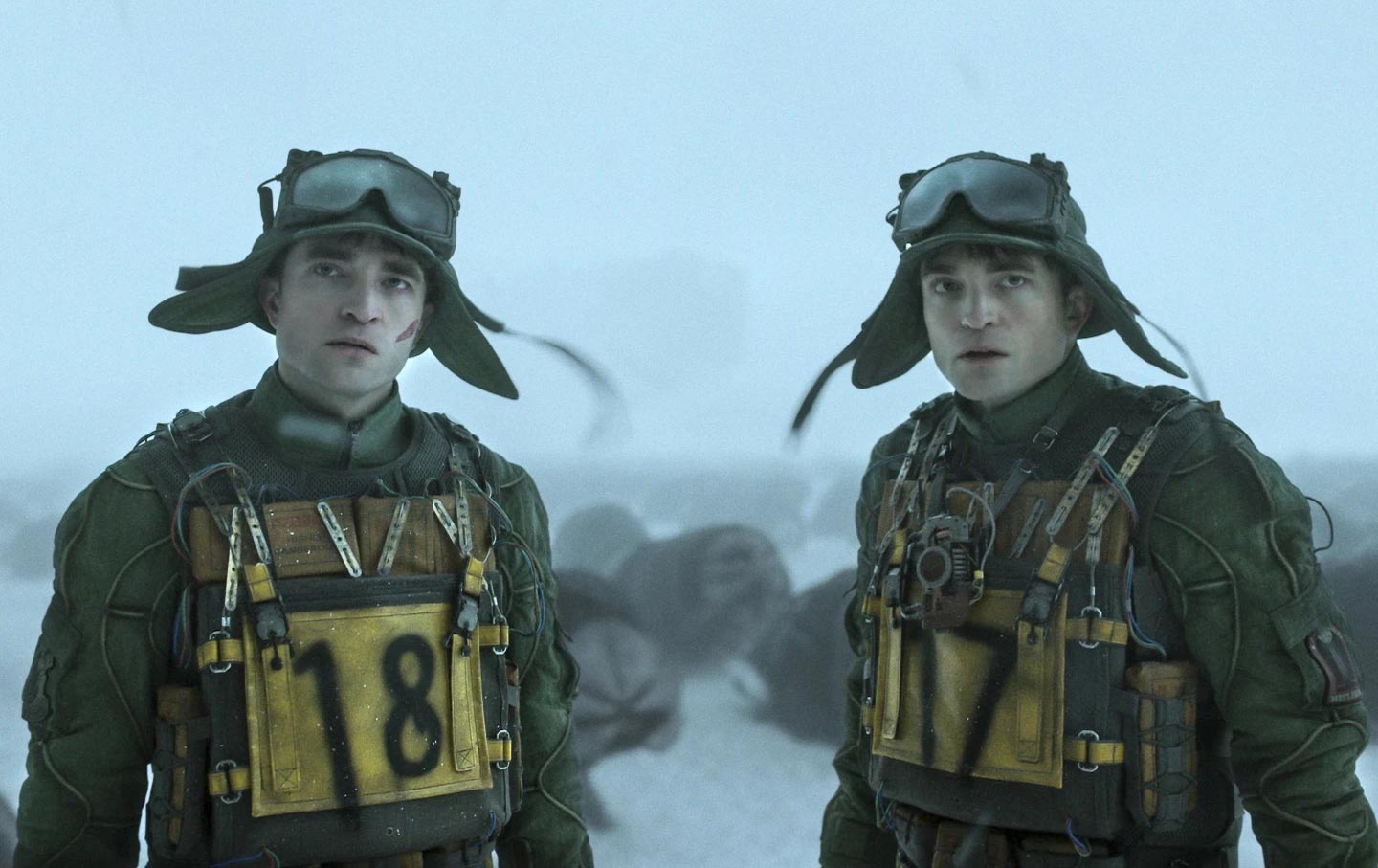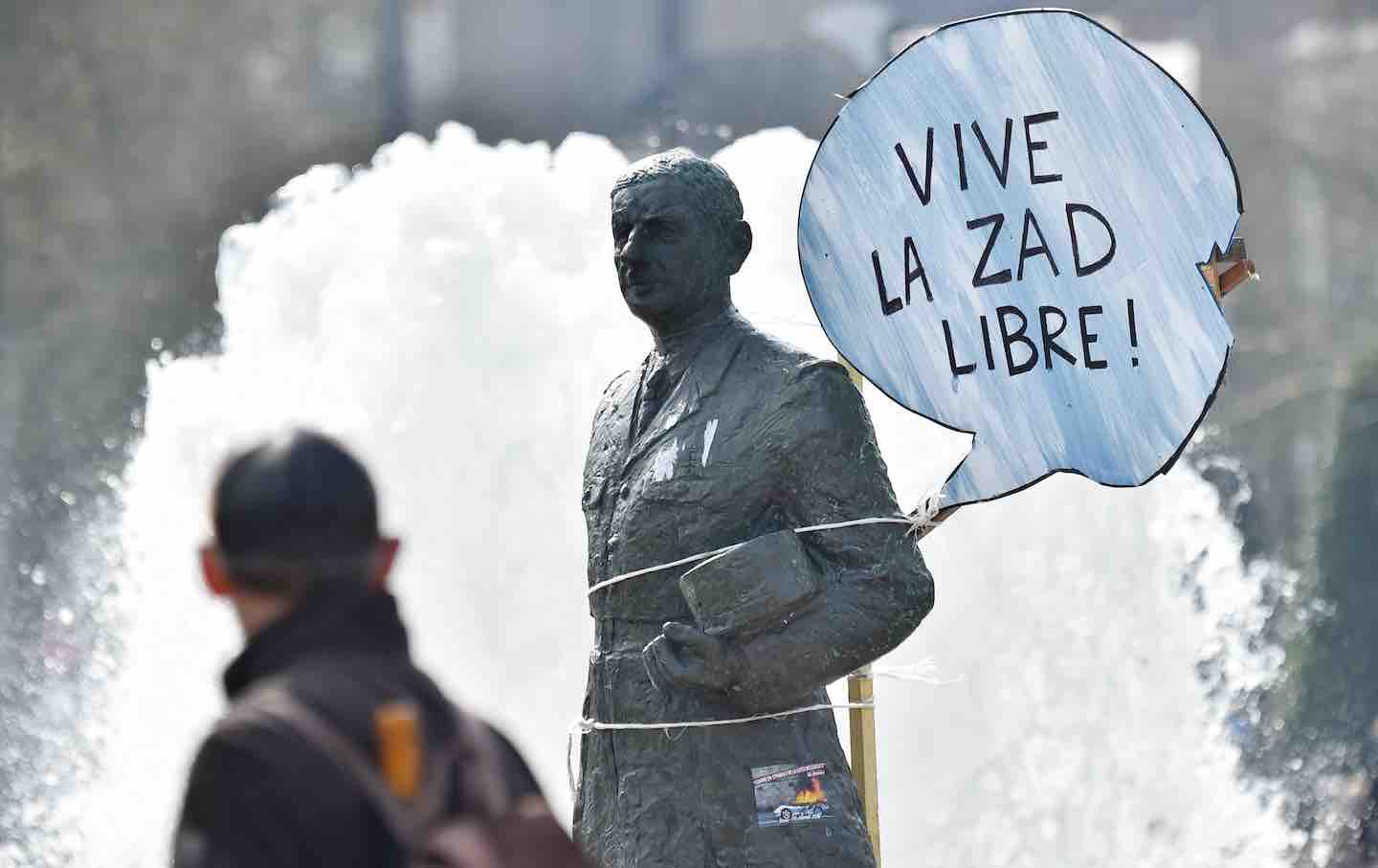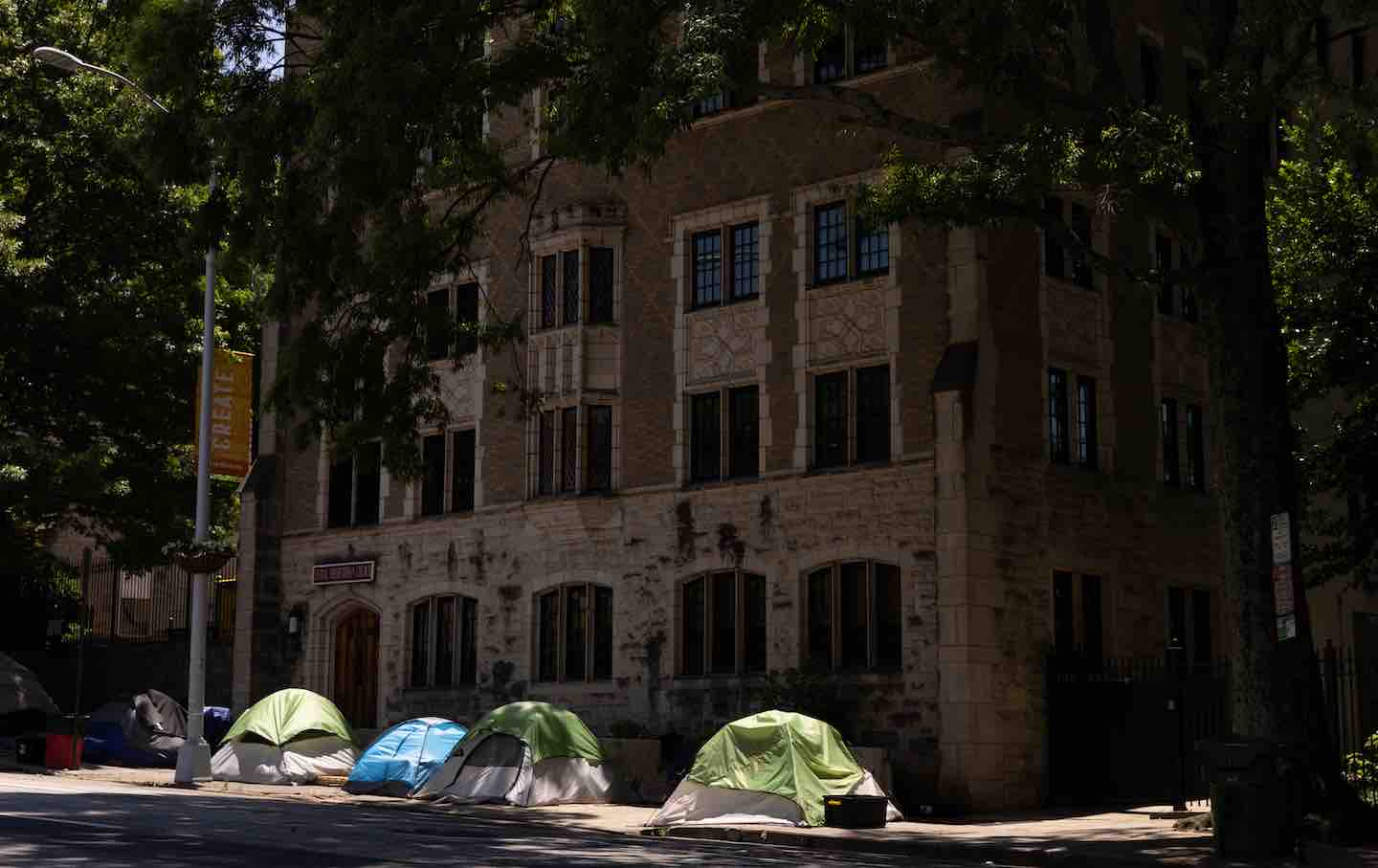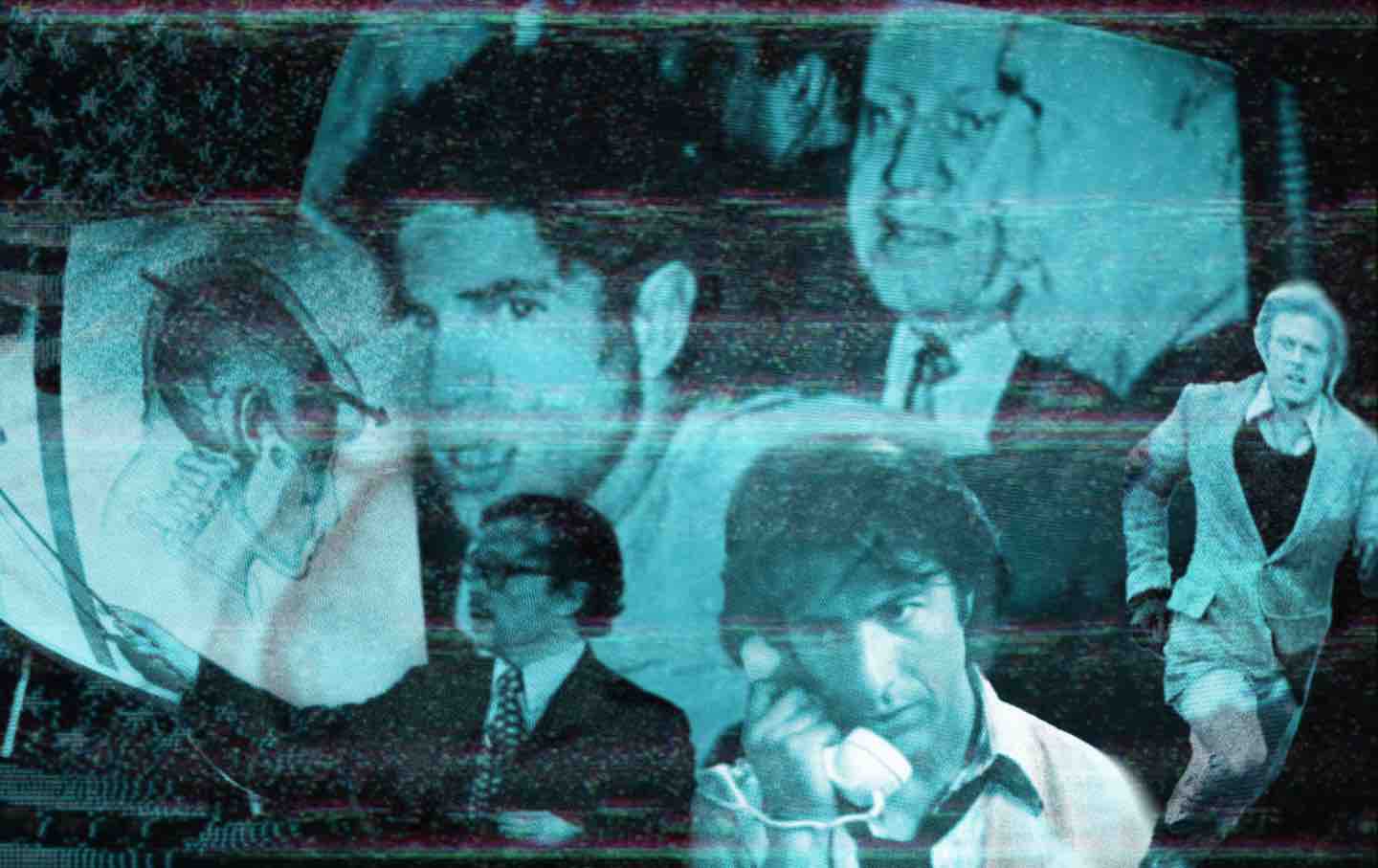Bringing a Seminal Palestinian Resistance Novel to the World
Talking with the translators of Wissam Rafeedie’s The Trinity of Fundamentals, a book whose genesis is as extraordinary as its contents.
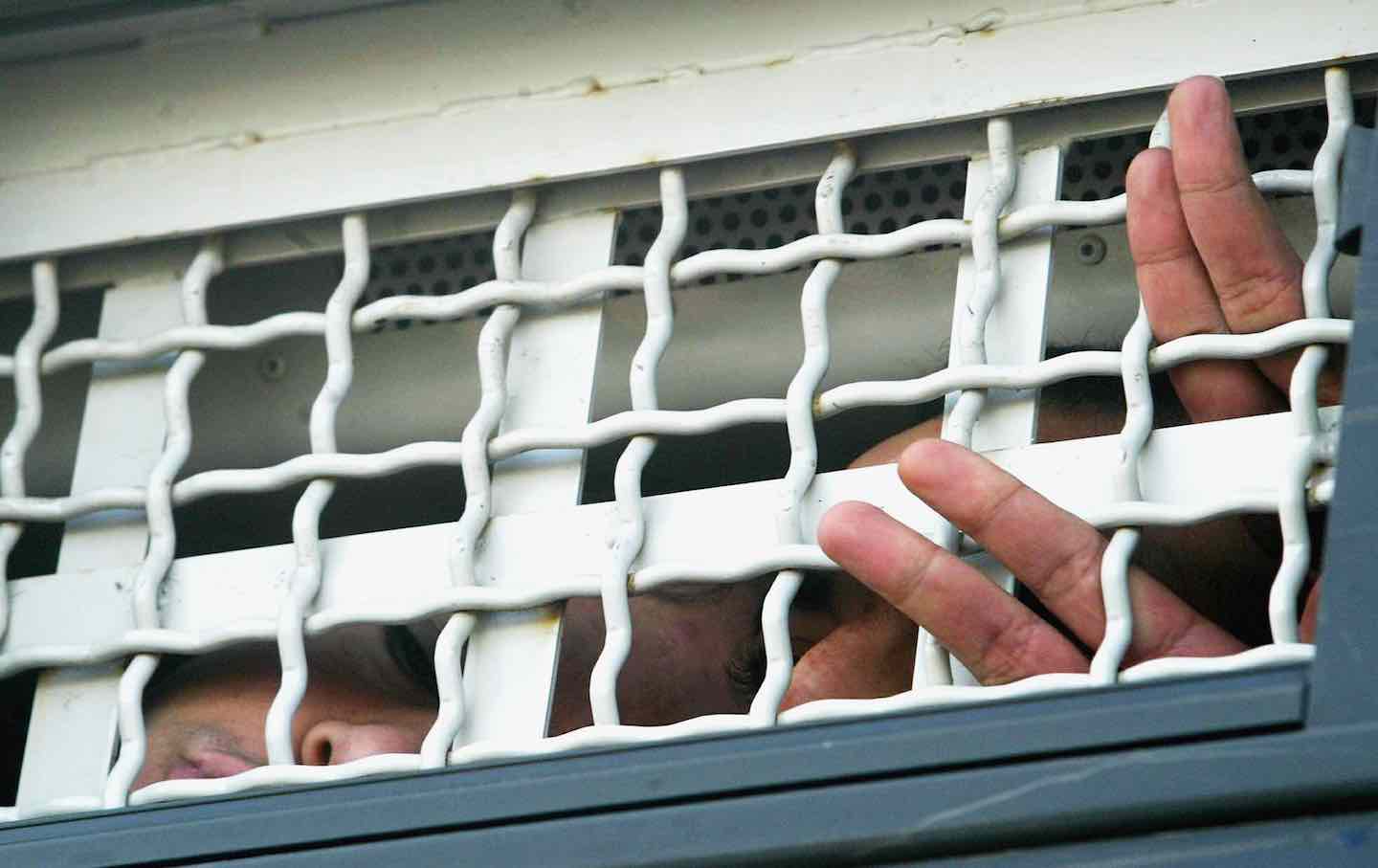
TEL MOND, ISRAEL – JANUARY 27: Arab prisoners flash the V-sign for victory and peer through the barred window of an Israeli prison truck January 27, 2004 in Tel Mond, Israel. Authorities move the prisoners in preparation for their release January 29, 2004 according to a German-brokered prisoners swap deal between Lebanon’s Shiite Muslim guerrilla group Hezbollah and Israel. (Photo by Uriel Sinai/Getty Images)
(Photo by Uriel Sinai / Getty Images)Wissam Rafeedie was pacing around his cell at al-Naqab, a sprawl of tents turned into an open-air prison complex in the southern Palestinian desert. It was 1993, the second year of a 34-month sentence for operating an underground leftist publishing house in the West Bank. In the nine years that preceded his capture, Rafeedie had been living in hiding, slipping from safehouse to safehouse, avoiding Israeli officials who wanted to bring an end to his clandestine publications and dissident political activity.
His imprisonment came after a long period of fruitless interrogation that included a forty-day stint in solitary confinement. Rafeedie was hogtied and forced to remain awake for three consecutive days; he lost nearly twenty-five pounds. In the aftermath of that torture, Rafeedie, urged by some of his fellow prisoners, set out to write about his time in hiding. Missing from the body of literature around the Palestinian cause, he thought, were individual accounts of resistance, ones that documented the mundanity of everyday life during such extraordinary pursuits. He felt that such an account of his clandestine life would be invaluable to the next dissident who pursued it. Those writings, scrawled across a number of tiny, orange, Red Cross booklets, would become a novel, The Trinity of Fundamentals.
The protagonist of Rafeedie’s story is a thinly fictionalized version of himself: a revolutionary named Kan’an Subhi. Alternating between scenes from the day of his capture and his nine years in hiding, the novel follows nearly a decade of Subhi’s life, documenting his experience during major moments in the Palestinian struggle—the First Intifada, the Gulf War—offering readers a view into the internal debates that raged among Palestinian political parties during that period. But Rafeedie also puts forward a personal testament to those moments, to the exhilaration of those resistances and the ordinary work that founded them. To the psychological toll of a life committed to struggle, and to mending the contradictions between the revolutionary and the human, what he calls, “the gazelle and the rifle, the rock and the apple.”
Along the way, Rafeedie introduces the people in his life who, by virtue of their proximity to him, must either submit to the cause or leave him: his fiance, Muna, who he cuts contact with once he goes in hiding, his mother, Umm Kan’an, who is the only family member who knows of his whereabouts and deceives the Israeli occupation forces who interrogate her for that information. Rafeedie offers an intimate picture of a political dissident resolutely committed to revolutionary change, who, despite the rending contradictions of clandestinity, emerges with a deeper connection to his homeland after a decade in hiding, declaring, at the end of all of it, that he never did “feel the cold wind of exile gnawing at my bones.”
The novel spread briskly throughout al-Naqab, smuggled in pill capsules, folded into dough balls, and thrown across prison cells. But when a prison guard intercepted the novel, Rafeedie conceded defeat. He had made only one copy and refused to write another. Unbeknownst to him, however, a fellow prisoner from Gaza had hand-written another version and smuggled it out from al-Naqab and to Nafha prison, further south in the country. From there, it began circulating throughout most of Palestine’s prisons. The book, smuggled back in 52 medicine capsules, returned to Rafeedie while he was in Asqalan prison. In 1997, Rafeedie was transferred to Tel Mond prison in the north of Palestine. There, through a small crack in the wall of the building’s visiting room, he slipped a reprinted copy to a comrade on the outside. A year later, when Rafeedie’s prison sentence ended, the book was finally printed in Ramallah, a work of collective resistance made permanent.
Now, 26 years after its publication, the novel has been translated into English by the Palestinian Youth Movement —a grassroots political organization of Palestinian and Arab youth abroad. Working alongside Muhammad Tutunji, a scholar and translator of Arab literature, the group’s translation of Rafeedie’s novel marks a significant addition to the slowly growing body of Palestinian resistance literature available in English.
The Nation spoke to three of the novel’s translators and editors, Danya Al-Saleh, Kaleem Hawa, and Dalia Awwad. Our interview covered the challenges of collective translation, bridging the gap between “the English and Arabic languages, the homeland and the far diaspora,” and what a novel focused on the fortitude of Palestinian resistance can offer us as we enter the sixth month of the war in Gaza. This conversation has been edited for length and clarity.
—Rayan El Amine
Rayan El Amine: How did the PYM first come across this novel, and why did you decide to translate this one specifically?
Danya Al-Saleh: Every two years the PYM has a summer school and a National General Assembly, and in 2022 one of our members had read the novel in Arabic and he proposed as a possible project we could take up. And when this was proposed to us, none of us had actually read the novel. But its significance was immediately apparent. It’s a novel of the “Palestinian Prisoners’ Movement,” but it’s also a story that covers the First Intifada through personal experience. We were honored that this could be something that we would be tasked with.
REA: Tell me more about the canon that Rafeedie’s work belongs to. Why is it so important to bring texts to English from the Palestinian Prisoner Movement?
Kaleem Hawa: The Zionist project depends on a system of imprisonment for its self-perpetuation, and the methods and strategies that the Israeli state uses to isolate the political prisoner, to depoliticize the struggle, to prevent the transmission of their knowledge from outside of the prison—all of these forces can be combated through a deliberate effort to make sure the knowledge of the prisoners’ movement reaches the widest possible audience. That’s why this novel, and others that comprise the tradition of Palestinian prison literature, are crucial in this effort: Works like those of Kamil Abu Hneish and Walid Daqqah, imprisoned now for 38 years, as well as The Philosophy of Confrontation Behind Bars (1982), written in part by Mahmoud Fanoun, who himself spent 5 years hiding from the IDF. It is important in our role as diaspora Palestinians and Arabs that we connect that lineage of resistance to those who otherwise wouldn’t have access to it in Arabic.
Dalia Awwad: I think PYM also recognizes that, for us, the Zionist project’s main goal is to sever our connections in the diaspora. That this novel was liberated from Israeli prisons and now translated to English is again a failure of that attempt of severing. A big part of al-tashteet el-falasteeni (the formation of the Palestinian diaspora) was to spread people across different geographic locations and turn their realities so different such that they could no longer relate to each other. This novel demonstrates that despite those attempts at fragmenting Palestinian society, there remains unity behind the struggle for liberation.
REA: I think this question of severance is really important. Particularly after Oslo and the weakening of the PLO, the diaspora lost a shared political center.
DAS: In the post-Oslo context, various institutions were largely dismantled or underwent decline, such as the General Union of Palestinian Students, that served as a vehicle for organizing in the diaspora across continents. But on top of that, here in the United States for example, most of the institutions that currently exist, that could be doing this kind of work, like universities, it’s just impossible. It’s often impossible to do any scholarly or critical work on Palestine in a supportive environment, let alone this kind of translation. When we began the translation, I wouldn’t even say we reached the level of amateur translators. And that’s why we had 14 of us. Fourteen people with very different, high-level skills, and it was really through sheer will and commitment that we eventually reached the level of amateurism. But that must happen because we’re not in a place at this point where there’s any institution that would really support this project, and most likely it would be the opposite, they would fight against it.
REA: I think this is one of the fascinating parts of this translation. You know, ultimately, working with 14 people is really quite inefficient. What do you think was gained from this kind of collective process?
DAS: Well number one, because we’re a political organization, we’re not paid to do this work. There is no singular person that could have taken on this project. But also this work wasn’t solely about translation. We have political objectives and reasons that underlie why we chose to take on this novel. So the process of reviewing the translation wasn’t only to make sure it was beautiful. When you think about the interventions of this novel, the glossary and the footnotes, even the debates around that language, you can’t think about efficiency or inefficiency. The scope and depth of the project could only have happened through all 14 members.
KH: I would also add that the editing process itself was a site of politicization for us as an organization. It’s an experience of deep reading of historically significant moments in the Palestinian struggle. We are also witnessing [in the book] debate between local committees and a unified national leadership structure during the First Intifada; or the positions of the political blocs during the Gulf War. Some of the debates that Wisam is tracing in the book were replicated among ourselves in the process of editing.
REA: Do you think then it’s changed how you all think about both mobilization and organization?
DAS: Yes. Part of what the story is, it’s the building of an organization. You see how that building is essential to the fabric of popular uprising. And thinking about our current moment, the mobilizations that the PYM has been leading, it’s not a spontaneous thing. For example, 2021 was a big moment for PYM that set the foundations to organize in this moment after October 7. But it begins even before that: ten years of building up organizations that have allowed PYM to now sustain the actions we’ve been maintaining for the past six months. It has only happened through actually very mundane work of building organizational capacity. And those parallels exist in the book.
KH: It also adds texture and complicates certain understandings of revolutionary movements in the Palestinian struggle, specifically the First Intifada. It’s often narrated as this popular, multisector, spontaneous uprising against Zionist settler colonialism. And of course elements of that are true, especially the mass and popular character of the campaigns, but the novel helps to show the level of coordination and organization that was connected to local councils and unions and other formations taking on that work during the First Intifada. These are lessons, both for understanding our history and for diagnosing some of the contemporary weaknesses in the struggle more broadly.
REA: The novel has come out at a time, at least in terms of popular perception, that is quite different from the place where you began this project two years ago. After October 7th, I think, the popular perception around the legitimacy of the Israeli state has crumbled. What do you hope readers can gain from the book now?
DA: There’s a psychological toll this has taken on everyone, and though I don’t want to minimize that, it’s a novel that walks you through the process of someone who had to build out their mental fortitude. So I think the novel kind of provides an answer for that toll. Despite all he’s sacrificed, Wisam maintains that it’s for the struggle, like there is no point where he turns his back on it and so I think it’s a guide on how to build up that specific mental fortitude.
DAS: You know, just to share where we were at, we didn’t finish the novel by October 7th. And, of course, after that all the work was paused. So we returned to it in January and one of the questions we discussed was this exact one: how do we see lessons from this novel manifest in this moment? And really this book articulates the spirit of what is required to maintain the struggle. It had already resonated with us but reading it after months of the genocide and returning back to the novel with that question, it always comes back to ideological conviction.
KH: I don’t think I have a neat answer to this question. But it’s just that obviously the past six months have been a total horror. And I don’t know, I keep coming back to the book. I flip through it, I have little annotations and notes I like coming back to. I return to Wisam’s feelings of isolation and the redemption that he gets from the work he’s doing and his engagement with small cultural artifacts that give him joy. And I think also, it’s a feat that this novel exists in the first place and there’s something there, I think, knowing how much of our culture and history is being destroyed right now, this novel is a reminder that our struggle has always been riddled with setbacks, but we persist.



